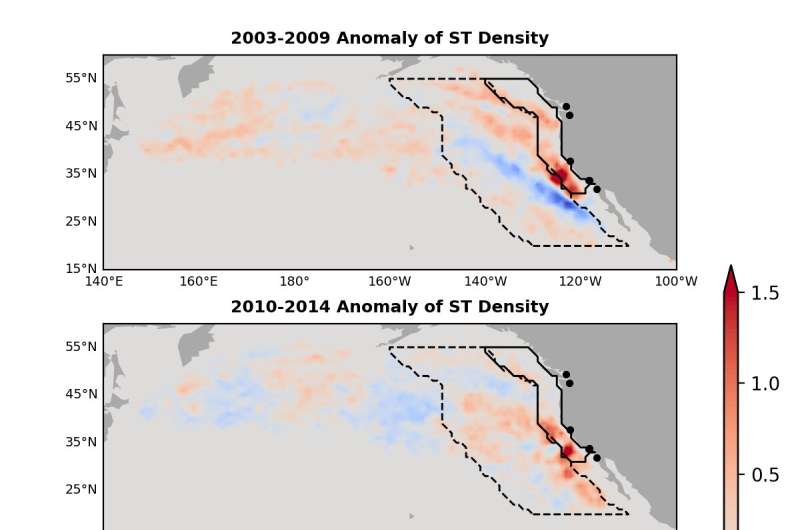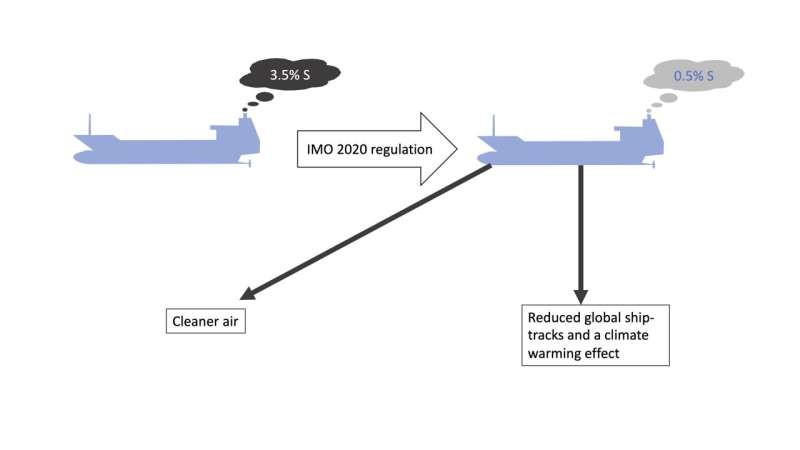Changes in detected ship-track density for four periods of different fuel regulations. Credit: Tianle Yuan et al.
A team of researchers affiliated with several universities in the U.S., working with the Goddard Space Flight Center, has used a deep-learning algorithm to create maps of ship tracks across the planet. In their paper published in the journal Science Advances, the group describes using their algorithm to learn more about the effectiveness of rules implemented to reduce pollution emitted from ships.
For more than 55 years, scientists have known that as ships sail across the world's oceans, they often leave behind what have come to be known as ship tracks. Looking somewhat like contrails left behind by airplanes, the tracks are created by emissions from ships interacting with the local environment.
Ship tracks are formed when aerosols included in exhaust from ships burning fossil fuels are sent aloft into the atmosphere, where they mix with low hanging clouds. As they mix, more water droplets form, and that leads to the clouds growing brighter—bright enough to be seen in satellite images. As the ship moves, the clouds above them brighten just enough to create a trail, outlining its path through the water.
The 2020 regulation on sulphur content cleaned up the air, but also created a climate warming effect. Credit: Tianle Yuan et al.
Emissions from ships also contribute to climate change, which is why some countries have instituted emissions rules for ships passing through certain shipping lanes—and that has led to a reduction in observed ship tracks. But it has not necessarily reduced the footprint of the shipping industry, as many such entities have skirted rules by burning different fuels depending on where they are sailing. Removing elements in fuel that produce pollution makes the fuel costlier, so ship owners prefer only to use the expensive stuff when they are being monitored. In this new effort, the researchers took a new approach to monitoring ship activity. They used a deep-learning algorithm to teach their computer to recognize ship tracks appearing on satellite images. They used the data from the algorithm to create maps of the world showing ship tracks over a desired period of time, thereby giving climate scientists a new tool to track a large source of greenhouse gas emissions.
The researchers acknowledge that their maps are not complete—not all ship journeys create ship tracks. Their creation is dependent on certain environmental conditions, including weather and pollution levels.
More information: Tianle Yuan et al, Global reduction in ship-tracks from sulfur regulations for shipping fuel, Science Advances (2022). DOI: 10.1126/sciadv.abn7988
Journal information: Science Advances
© 2022 Science X Network

























